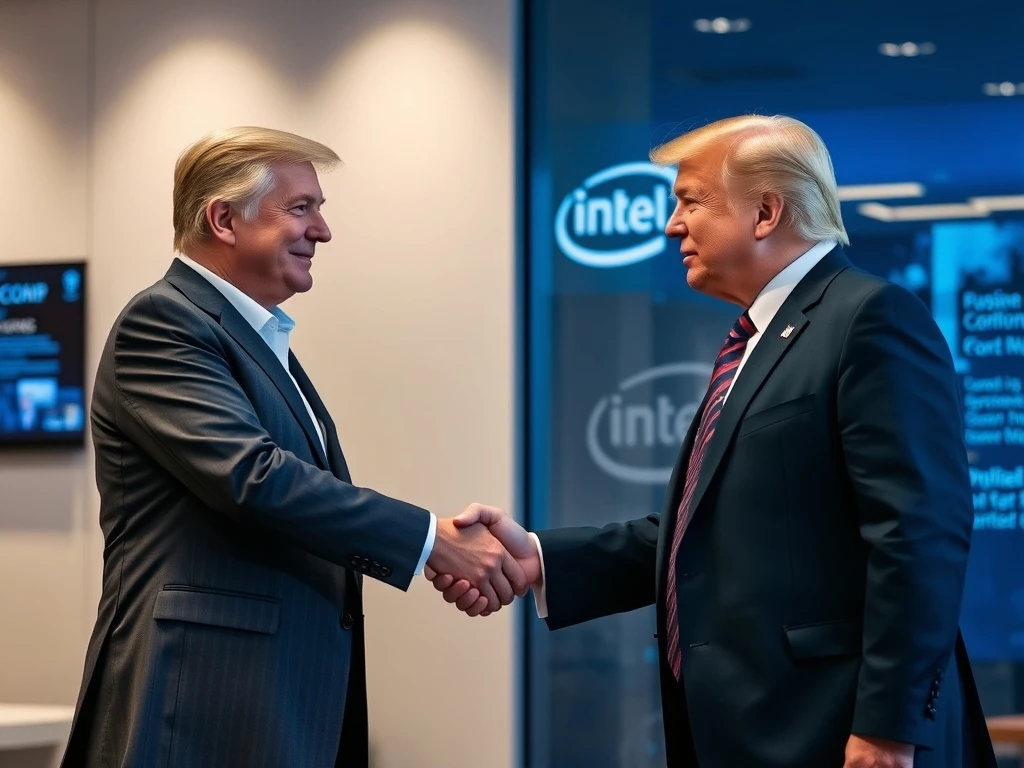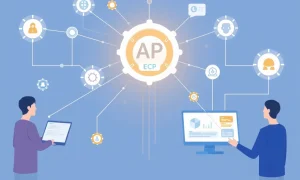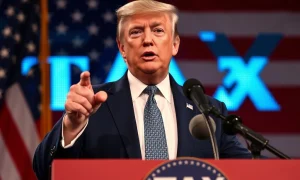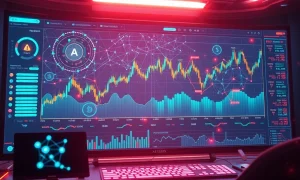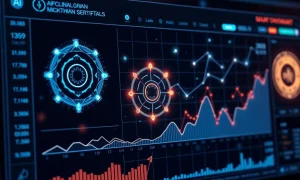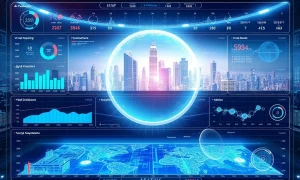The landscape of corporate-political relations constantly shifts. Businesses frequently navigate complex government interactions. Recently, reports suggest a significant warming between **Intel CEO Trump**. This development holds considerable implications for the technology sector. It also affects the broader political economy. Understanding this evolving dynamic is crucial for anyone following business and entrepreneurship. Indeed, such interactions shape future policy and market conditions.
Understanding the **Intel CEO Trump** Dynamic
Intel, a global leader in semiconductor manufacturing, plays a vital role in the U.S. economy. Its operations directly impact national security and technological advancement. Similarly, former President Donald Trump remains a powerful figure in American politics. His influence on policy and public discourse is undeniable. Therefore, any perceived reconciliation or improved relationship between **Intel CEO Trump** draws significant attention. This interaction could signal new approaches to tech policy.
Historically, tech companies have engaged with various administrations. These engagements often focus on specific legislative agendas. For example, Intel has advocated for policies supporting domestic chip manufacturing. This includes initiatives like the CHIPS Act. Such advocacy aligns with national interests in supply chain resilience. It also promotes technological leadership. The nature of these corporate-political ties can significantly influence business outcomes.
The Reported Reconciliation: What Happened?
Recent observations indicate a more positive rapport between **Intel CEO Trump**. While specific details often remain private, these interactions typically occur during key events. They might involve policy discussions or private meetings. The goal for corporations is often to advocate for favorable regulatory environments. They also seek support for strategic investments. For political figures, engaging with industry leaders provides insights into economic challenges. It also helps in shaping policy proposals. This reported shift suggests a mutual recognition of shared interests.
Sources suggest the focus of these discussions centers on critical economic issues. These issues include job creation and manufacturing expansion. Furthermore, national competitiveness in advanced technologies remains a core topic. Both parties recognize the importance of a robust domestic semiconductor industry. This shared understanding forms a basis for improved dialogue. It also lays groundwork for potential future collaborations.
Key Policy Areas Influenced by **Intel CEO Trump** Interactions
The semiconductor industry faces numerous challenges. Global competition is intense. Supply chain vulnerabilities are a constant concern. Therefore, discussions between **Intel CEO Trump** likely cover several critical policy areas. These areas are vital for Intel’s future and for U.S. technological leadership.
Key policy areas include:
- Domestic Manufacturing: Strengthening U.S. capacity in chip production. This reduces reliance on foreign suppliers. It also creates high-paying jobs.
- Research and Development: Increasing government funding for cutting-edge semiconductor research. This ensures American innovation remains at the forefront.
- Trade Policies: Navigating international trade agreements and tariffs. These policies impact global supply chains and market access.
- Workforce Development: Investing in education and training programs. This addresses the shortage of skilled labor in the tech sector.
Each of these areas directly impacts Intel’s operational strategies. They also influence its long-term growth prospects. Political alignment on these issues can provide significant advantages.
Implications for Intel’s Business Strategy
A strengthened relationship between **Intel CEO Trump** could profoundly affect Intel’s strategic direction. The company has already committed billions to expanding U.S. manufacturing. This includes new fabs in Arizona and Ohio. Political support for these ventures is crucial. It ensures the necessary infrastructure and regulatory environment.
Furthermore, improved political ties might unlock new avenues for government contracts. They could also streamline regulatory approvals. This would accelerate Intel’s domestic projects. The company’s ‘IDM 2.0’ strategy emphasizes both internal manufacturing and foundry services. Government backing could bolster both pillars. Ultimately, a favorable political climate supports Intel’s ambitious growth plans. It also reinforces its position as a key national asset.
Broader Impact on the Technology Sector
The implications extend beyond Intel. The entire technology sector watches these developments closely. A strong alliance between a major tech leader and influential political figures sets a precedent. It can influence how other tech giants engage with Washington. This could lead to a more unified industry voice on key policy matters. Moreover, it might encourage greater domestic investment across the sector.
For instance, if **Intel CEO Trump** interactions lead to more robust government incentives, other companies may follow suit. They might increase their U.S.-based manufacturing. This would strengthen the entire American technology ecosystem. It could also shift global supply chains. The ripple effect of such high-level engagements is considerable. It shapes future industry trends and competitiveness.
Navigating the Political Landscape: Challenges and Opportunities
While reconciliation offers opportunities, challenges persist. Political landscapes are inherently unpredictable. Future administrations may adopt different priorities. Therefore, maintaining consistent engagement is vital for Intel. The company must adapt to evolving political climates. It must also continue to advocate for its long-term interests.
Opportunities arise from shared goals. Both corporations and governments seek economic prosperity and national security. Aligning these objectives can lead to powerful partnerships. For example, joint initiatives on advanced technology research could benefit both parties. Such collaborations can accelerate innovation. They can also create new economic opportunities. The evolving **Intel CEO Trump** dynamic highlights these potential benefits and complexities.
The Future of Corporate-Government Collaboration
The reported warming between **Intel CEO Trump** reflects a broader trend. Companies increasingly recognize the need for active political engagement. This is especially true in strategic sectors like technology. Governments, in turn, understand the critical role businesses play in national success. This mutual dependency drives collaboration.
Future interactions will likely focus on concrete policy outcomes. These outcomes include legislation, funding, and regulatory frameworks. The success of these collaborations depends on clear communication. It also requires shared vision and consistent effort. Ultimately, the **Intel CEO Trump** relationship serves as a case study. It demonstrates the evolving nature of corporate influence in modern governance. This dynamic will continue to shape the global technology landscape for years to come.
Frequently Asked Questions (FAQs)
What is the significance of the reported **Intel CEO Trump** reconciliation?
The reported reconciliation signifies a potential alignment of interests between a major U.S. technology company and a highly influential political figure. This could lead to increased political support for Intel’s domestic manufacturing initiatives and broader U.S. tech policy, impacting the semiconductor industry and national competitiveness.
How might this relationship impact U.S. semiconductor manufacturing?
A stronger **Intel CEO Trump** relationship could bolster efforts to expand U.S. semiconductor manufacturing. This might translate into continued government incentives, streamlined regulatory processes, and increased investment in domestic chip production facilities, aligning with national security and economic goals.
What specific policy areas are likely discussed between Intel and political figures?
Discussions typically revolve around key policy areas. These include domestic manufacturing incentives, increased funding for research and development, favorable trade policies, and initiatives for workforce development in the tech sector. These areas are crucial for Intel’s growth and U.S. technological leadership.
Does this mean Intel is aligning with a specific political party?
Corporate engagement with political figures does not necessarily indicate alignment with a specific political party. Companies like Intel often engage with leaders across the political spectrum to advocate for policies that benefit their industry and the broader economy, focusing on shared objectives rather than partisan politics.
What are the potential long-term effects on the tech industry?
The long-term effects could include a shift towards greater domestic investment and manufacturing across the tech industry. It might also foster a more unified industry voice on policy matters. Furthermore, it could influence global supply chains and strengthen the overall American technology ecosystem, enhancing U.S. competitiveness.

